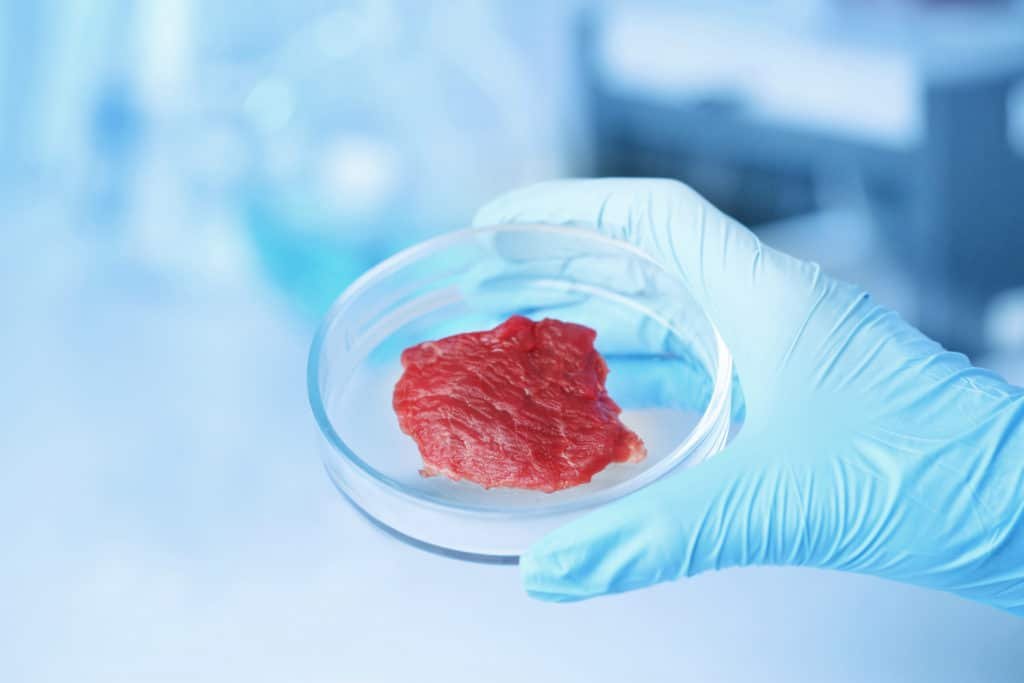Fear-Mongering and 'Frankenfood': Lessons for the Future of Lab-Grown Meat
‘Udder insanity’, ‘Frankenfood’, and ‘Crying over unnatural milk’ are just three of the many headlines that emerged in the early 1990s in response to the dawn of hormone recombinant bovine somatotropin. This feat of genetic engineering was designed to increase the milk production of dairy cows, potentially reducing the number of cows in a herd to minimise environmental impacts of the industry. It is now banned in all EU production systems. The planting of genetically modified organisms (GMOs) has also been banned in the EU, except for one strain of Bt corn grown in Spain and Portugal. Plans to revolutionise our use of insecticides by growing insect-resistant plants via GMO technologies have not come to fruition. And notably, GMO crop usage worldwide tends to be limited to processed and packaged foods or those grown for animal feed, rather than for direct human consumption.
While these technologies were originally designed to innovate global food production, over the last few decades, GMO goods have been subject to an intense fear mongering campaign by media outlets and market competitors. Still, the potential benefits of genetically engineered agriculture are broad: boosted global food production, improved shelf life, greater cost effectiveness and reduced agricultural water, pesticides, and land usage. All sounds pretty good, right? So why has GMO food fallen out of favour? To answer this requires tracing the historical marketisation, consumer uptake and shift in perception of GMOs.
The 1980s and early 1990s were an exciting time for biotech firms interested in food manufacturing. Calgene, a relatively small biotech startup in California, successfully released the ‘Flavr Savr’ tomato onto the market in 1994, following FDA approval. With an enzyme introduced to make these tomatoes resistant to a particular chemical inducing rotting, they were designed to have a longer shelf life to their non-GMO counterparts. It’s easy to see why many thought this was the beginning of a food revolution.
But by 1999 public opinion across Europe had largely turned against GMOs. Several factors were at play here. There were reputable voices who expressed concern about the potential long-term effects of genetic engineering and lack of studies at that time. Furthermore, many small start-ups working on GMOs were bought out by larger corporations, as happened with Calgene in 1997 by Monsato, contributing to a loss of trust from consumers and a generalised wariness of the safety and security of such crops being released into the supply chain. This occurred through perceived secrecy and arrogance on the part of these American companies. A particularly stark example of this occurred when the Monsato CEO went against highly reputable advise and didn’t label GMO soy shipped to Europe, nor advise European consumers it was being distributed. This led to outrage at the consumer level and a corresponding lack of willingness to stock such products in supermarkets.
Furthermore, although not universally negative, the vastly increased media coverage of GMOs was arguably the key ingredient in this public relations disaster. Fear mongering and sensational headlines such as ‘Frankenfood’ created public panic, whilst oversimplification of the issues encouraged people with no scientific knowledge to join the debate. The volume of exaggerated and unscientific claims, often drowning out arguments with greater scientific reason, confused the public and did nothing to clarify the potential of this technology. In the meantime, products such as golden rice, with the potential to supplement those most in need with vitamin A and prevent blindness were not, and are still not, commercially available.
Cut to three decades later and the term ‘Frankenfood’ is once again appearing in headlines. The subject line this time: in vitro meat (IVM). IVM is meat that can be grown by culturing adult or pluripotent stem cells on an appropriate scaffold. The first IVM burger, served in 2013 in front of a crowd of excited journalists at a London restaurant, came in at a whopping $330,000 in production costs. Albeit an impressive scientific feat, that’s about 8800x the cost of a Big Mac.
However, in 2021 Believer Meats, an Israeli company, announced they could produce cultured chicken meat for just $17/kg. Clearly, then, immense progress has been made in this application of bioengineering, whetting the appetite for what is to come. So, should we start salivating about tucking into a hunk of differentiated stem cells at a similar price and less environmental cost than the animal-derived alternative? Perhaps not just yet.
The recycling of the term ‘Frankenfood’ is just one indication that there may be similarities in consumer perceptions of GMO and IVM. Whilst it is smaller start-ups like Believer Meats and Mosa Meats (who made the first IVM burger) that currently produce most IVM, it is quite possible that larger firms may well buy out these businesses. Consumer perceptions may sour just as they did following Monsato’s acquisition of Calgene in the early days of GMO.
Consumer trust is fundamental to the development and adoption of new technologies, and nowhere is this more evident than in the arena of food. Supermarkets won’t invest in products that consumers distrust, evidenced by the snowball effect of Iceland’s early decision to go GMO free in 1997, subsequently followed by other British retailers. Our food industry can’t hope to move anywhere without getting novel products on the shelves, so managing public opinion of IVM is crucial to its ongoing development. An understanding of the past is therefore the key to future progress, with the consumer distrust of GMOs’ ‘unnaturalness’ back in the nineties already seen to be mirrored in contemporary IVM perceptions.
To market IVM most effectively, studies are being conducted to track consumers’ sensitivities. In a 2019 study by Bryant and Barnett, consumers’ least favourite name for cultured meat was ‘lab-grown meat’. Notably, they also associated this name most closely with unnaturalness, artificiality and disgust, through their own submitted word associations. ‘Clean meat’ as a label came out on top, evoking the most positive connotations including better nutrition, tastiness and naturalness. Embedded in this study is an important lesson: in order for IVM not to follow the same fate as GMOs, careful thought needs to be given to labelling. Ultimately, it appears that transparency concerning the development of the product and pushing connotations of positive health effects should be prioritised.
So how can our knowledge of GMO’s past inform the future of IVM? Firstly, a warning. Before any bio-engineer or plant-based foodie starts championing the wonders of IVM we must remind ourselves that there is no certainty that consumers will bite. Tech savvies love Apple watches but refuse to consider GM apples. The more break-through the food product, the more suspicious the public becomes. We must take small steps: an IVM nugget before a whooper burger. Secondly, headlines matter. If we want IVM to be properly funded and its possibilities and limitations investigated, the press have a huge role to play in shaping public perceptions. The downfall of GMOs proves how easily public opinion turns. Moving forward, consumer trust should be prioritised at every stage. Attention to the language used around new products, the design of packaging and the press surrounding them is as important as the products themselves. GMO breakthroughs failed before they had a chance to prove their worth. IVM should be given a chance. The prize is a big one: IVM might solve the desperate problems of over-intensive farming and animal cruelty, as well as reducing the environmental impacts of agribusiness. It would be deeply frustrating if progress stalled because of ill-founded fears and poorly managed public perceptions.




